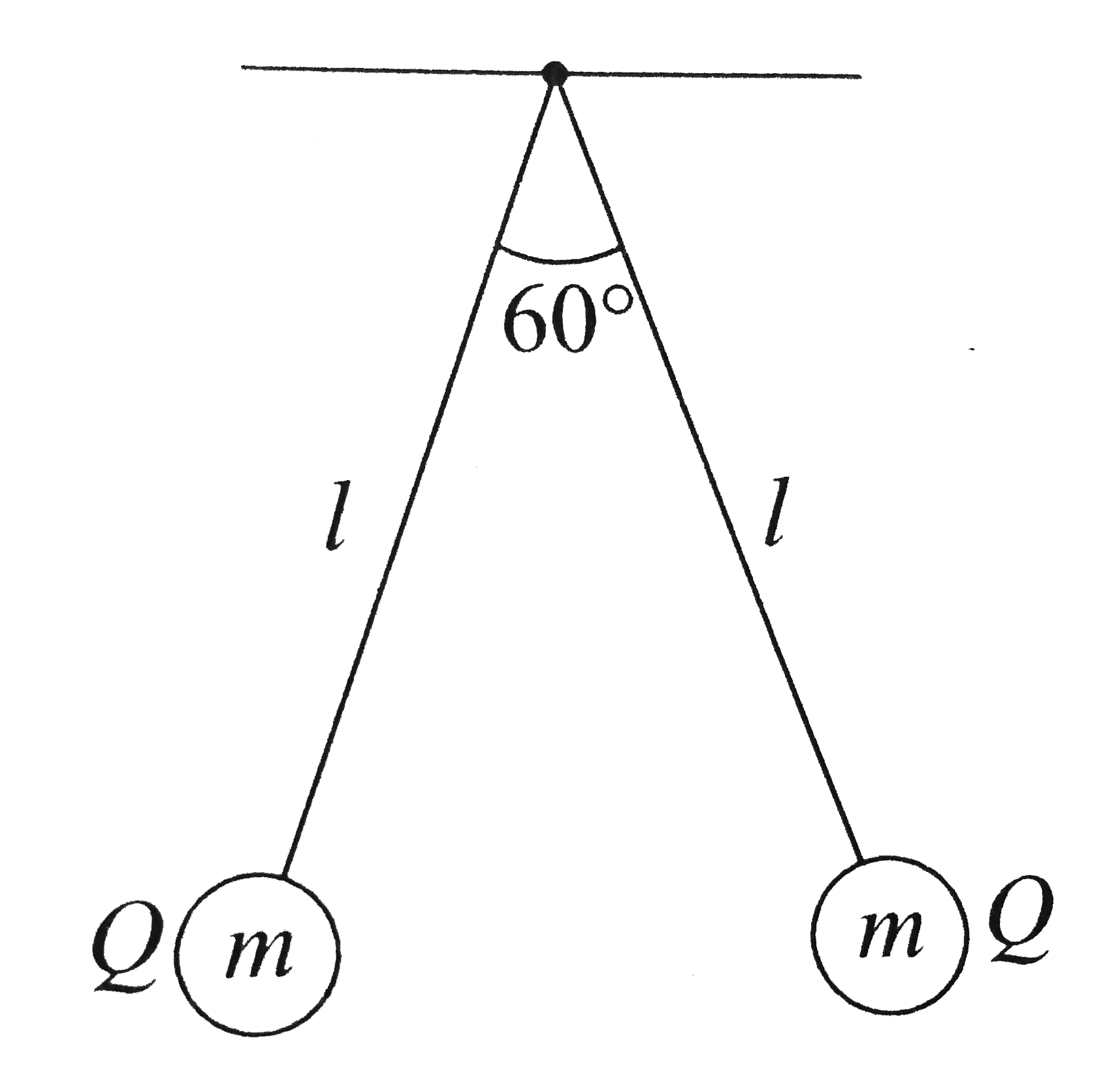Two identical pendulums A and B are suspended from the same point. Both are given positive charge, with A having more charge than B. They diverge and reach equilibrium with the suspension of A and B making angles θ1andθ2 with the vertical respectively.
θ1>θ2
θ1<θ2
θ1=θ2
The tension in A is greater than that in B
The correct Answer is:C
Topper's Solved these Questions
- ELECTRIC CHARGES AND FIELDSBOOK - AAKASH SERIESCHAPTER - ELECTRIC CHARGES AND FIELDSEXERCISE - Exercise-II
56 Videos
- ELECTRIC CHARGES AND FIELDSBOOK - AAKASH SERIESCHAPTER - ELECTRIC CHARGES AND FIELDSEXERCISE - Practice Exercise
57 Videos
- ELECTRIC CHARGES AND FIELDSBOOK - AAKASH SERIESCHAPTER - ELECTRIC CHARGES AND FIELDSEXERCISE - Assess Your Self
13 Videos
- DUAL NATURE OF RADIATION AND MATTERBOOK - AAKASH SERIESCHAPTER - DUAL NATURE OF RADIATION AND MATTEREXERCISE - PRACTICE EXERCISEX
44 Videos
- ELECTRIC FIELD AND POTENTIALBOOK - AAKASH SERIESCHAPTER - ELECTRIC FIELD AND POTENTIALEXERCISE - PROBLEMS (LEVEL-II)
32 Videos
Similar Questions
Two positively charged sphere of masses m1 and m2 are suspended from a common point at the ceiling by identical insulating massless strings of length l. Charges on the two spheres are q1 and q2 respectively. Equilibrium both strings make the same angle θ with the vertical. then
View SolutionTwo identical balls each having a density ρ are suspended from as common point by two insulating strings of equal length. Both the balls have equal mass and charge. In equilibrium each string makes an angle θ with vertical. Now, both the balls are immersed in a liquid. As a result the angle θ does not change. The density of the liquid is σ. Find the dielectric constant of the liquid.
View Solution
Knowledge Check
Two identical pendulums A an dB are suspended from the same point. Both are givne positive charge, with A having more charge than B. They diverge and reach equilibrium with the suspension of A and B making angles θ1 and θ2 with the vertical respectively.
Aθ1>θ2Bθ1<θ2Cθ1=θ2DThe tension in A is greater than that in BTwo identical pendulums A an dB are suspended from the same point. Both are givne positive charge, with A having more charge than B. They diverge and reach equilibrium with the suspension of A and B making angles θ1 and θ2 with the vertical respectively.
Aθ1>θ2Bθ1<θ2Cθ1=θ2DThe tension in A is greater than that in BTwo identical simple pendulums P and Q are susupended from a common point. The bobs of both the pendulums are positively charged but the magnitude of charge on the bob of P is double to that on Q, Both the bobs repel and reach equilibrium. If the thread of P makes an angle θ1 with the vertical and that of Q make an angle θ2 with the vertical, then
Aθ1>θ2Bθ1=θ2Cθ1<θ2DInformation insufficient
Two identical balls each having a density ρ are suspended from as common point by two insulating strings of equal length. Both the balls have equal mass and charge. In equilibrium each string makes an angle θ with vertical. Now, both the balls are immersed in a liquid. As a result the angle θ does not change. The density of the liquid is σ. Find the dielectric constant of the liquid.
View SolutionTwo identical balls each having a density ρ are suspended from as common point by two insulating strings of equal length. Both the balls have equal mass and charge. In equilibrium each string makes an angle θ with vertical. Now, both the balls are immersed in a liquid. As a result the angle θ does not change. The density of the liquid is σ. Find the dielectric constant of the liquid.
View SolutionTwo positively charged sphere of masses m1 and m2 are suspended from a common point at the ceiling by identical insulating massless strings of length l. Charges on the two spheres are q1 and q2 respectively. Equilibrium both strings make the same angle θ with the vertical. then
View SolutionTwo small balls, each having equal positive charge Q are suspended by two insulationg strings of equal length l from a hook fixed to a stand. It mass of each ball =m and total angle between the two strings is 60∘m, then find the charge on each ball.

View SolutionTwo identical metallic spheres A and B of exactly equal masses are given equal positive and negative charges respectively. Then
View Solution
